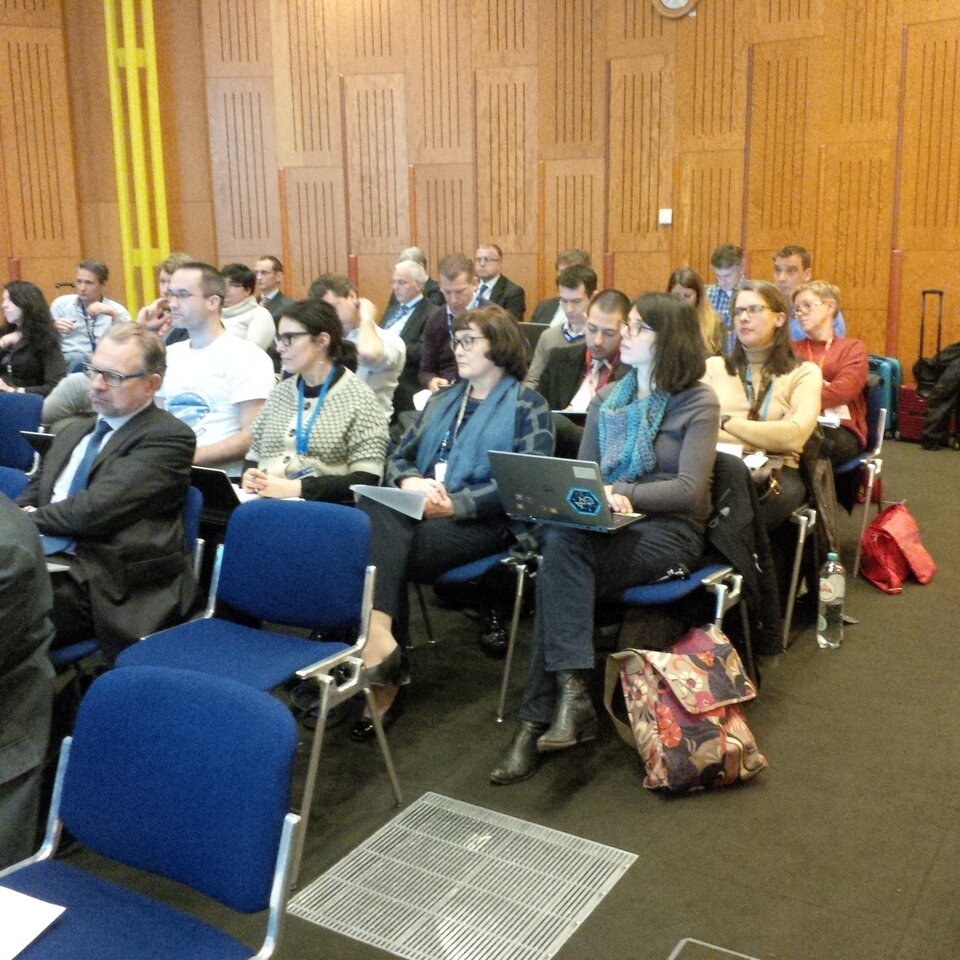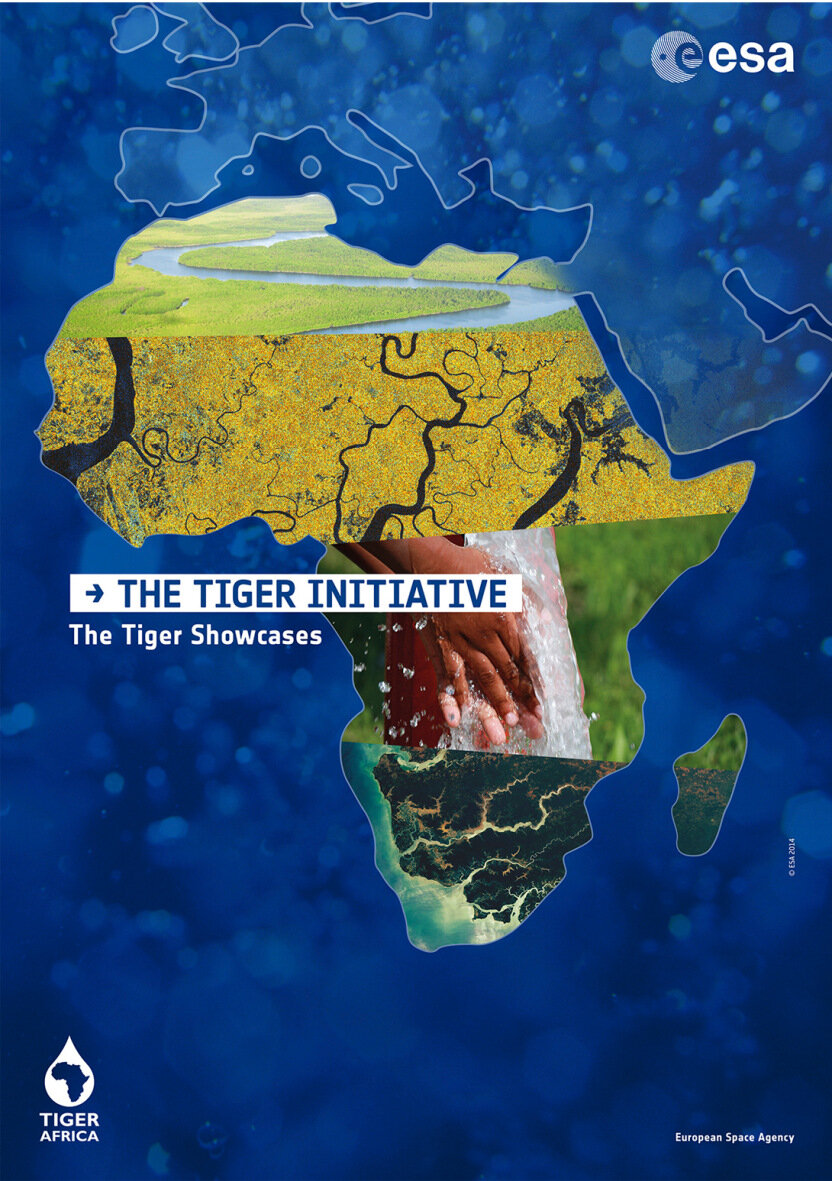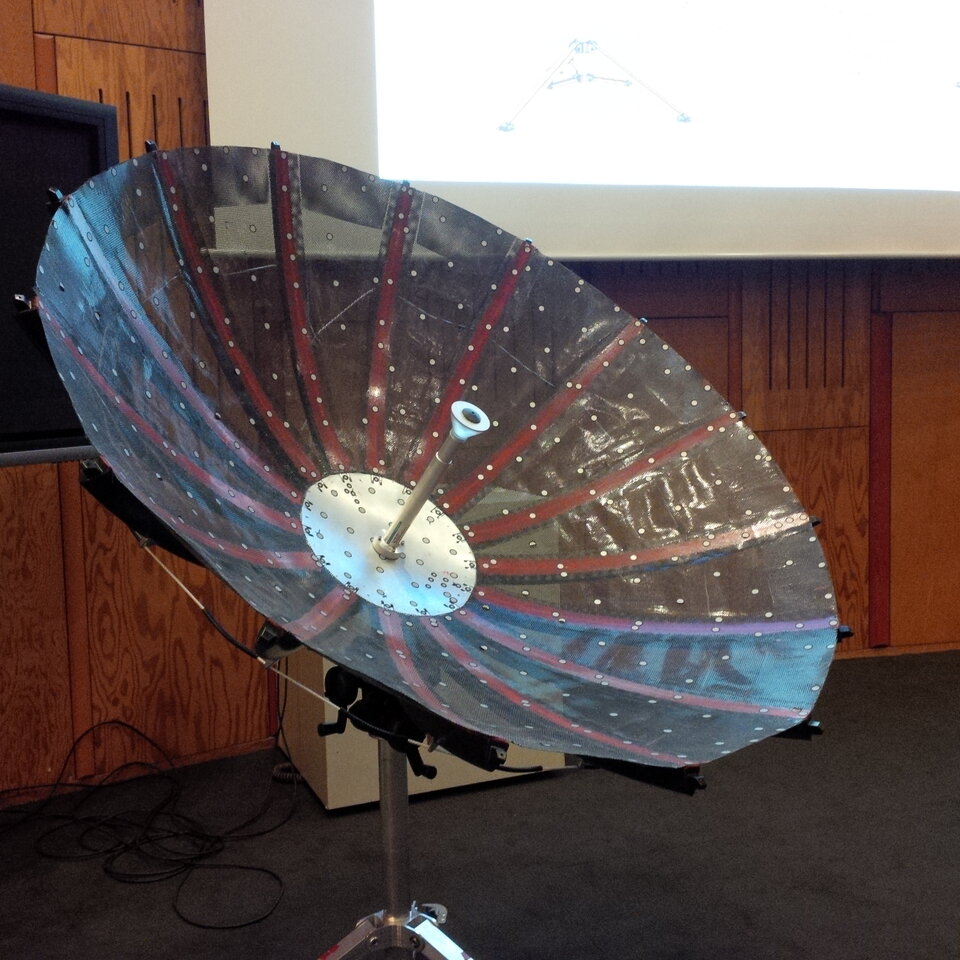How to tackle migration issues?
Migration, as a result of war, terrorism, poverty or economic crisis, is an increasing concern of our 22 Member States and one of the greatest challenges they currently face. Satellites already play a role in migration issues, and they could play an even greater role in the future via applications to be developed or future programmes.

An informal meeting at ESA's Technology Centre (ESTEC), organised as a follow-up from an internal jam session that took place in September 2015, hoped to find some concrete solutions to some of the most critical migration issues. Among the external attendees were representatives from a variety of organisations, such as Action Aid, the United Nations Institute for Training and Research (UNITAR), REACH International, the International Centre for Migration Policy Development (ICMPD), the European Union Satellite Centre (SatCen), the European Maritime Safety Agency (EMSA), Wetlands International and the International Organisation for Migration (IOM).
They comprehensively explained how they are already benefiting from, for instance, satellite imagery to be able to carry out humanitarian relief, to monitor activities in hotspots around the world and to generally aid with migratory issues. They also highlighted the current shortcomings of the delivered data and processing methods available.

Experts from all areas within ESA demonstrated a myriad of projects that have already been set-up, as well as the knowledge and technology available in the agency that might enhance the constructive tackling of migratory issues. ESA's Earth Observation satellites are one of the used sources for outside organisations in terms of images. Some of the downsides mentioned were the gaps in data acquisition related to the pass-over times of the satellites and the lack of high-resolution images. These gaps may be filled by combining EO data with data acquired from other assets, such as UAVs or ground observations.
The EOP Tiger project, among many more, comprehensively showed what can be done for the local communities in terms of clean water for everyone, which ties in nicely with the UN Sustainable Development Goals. ESA's Integrated Applications Programme also supports the development of many applications in numerous areas, and the specific example of (tele-) Education was detailed.

Another great example was a novel antenna, developed by ESA's Telecommunications and Integrated Applications department, that can be deployed within 5 minutes and restore communications quickly in disaster areas. ESA's Technology Transfer Program also contributed to the discussion in terms of making the link with entrepreneurs and players in the field. Moreover, ESA experts in the field of big data offered their knowledge on how to deal effectively with the copious amounts of data generally acquired in these situations. Representatives from other areas within ESA, including Human Spaceflight and Robotic Exploration, Technology, the Concurrent Design Facility, and Navigation also highlighted a few of their projects in relation to migration issues.
All participants agreed that this had been a fruitful meeting in which the foundations were laid for more cooperation between ESA and users in the field, which will hopefully lead to a successful integration of ESA's knowledge with the day-to-day challenges of people who are trying to solve some of the most basic issues of migration.















 Germany
Germany
 Austria
Austria
 Belgium
Belgium
 Denmark
Denmark
 Spain
Spain
 Estonia
Estonia
 Finland
Finland
 France
France
 Greece
Greece
 Hungary
Hungary
 Ireland
Ireland
 Italy
Italy
 Luxembourg
Luxembourg
 Norway
Norway
 The Netherlands
The Netherlands
 Poland
Poland
 Portugal
Portugal
 Czechia
Czechia
 Romania
Romania
 United Kingdom
United Kingdom
 Slovenia
Slovenia
 Sweden
Sweden
 Switzerland
Switzerland


























